Oenothera caespitosa, Tufted Evening Primrose
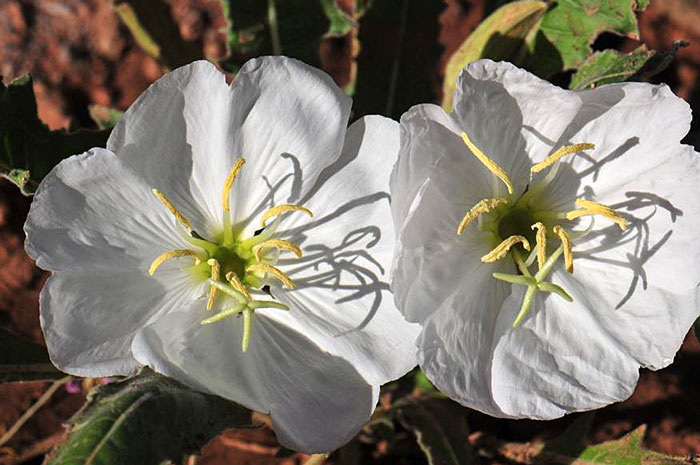
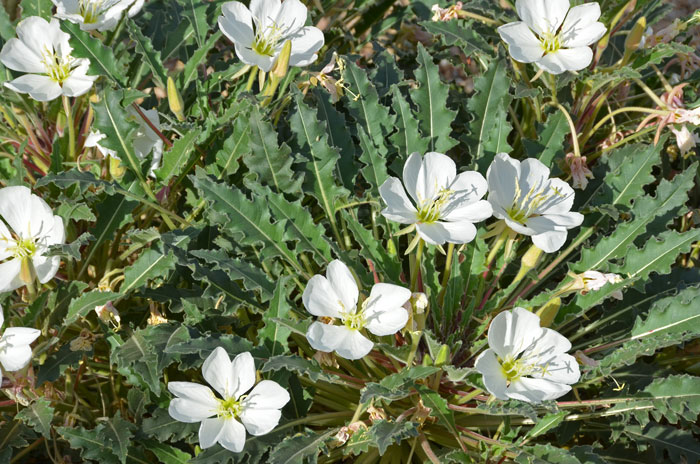
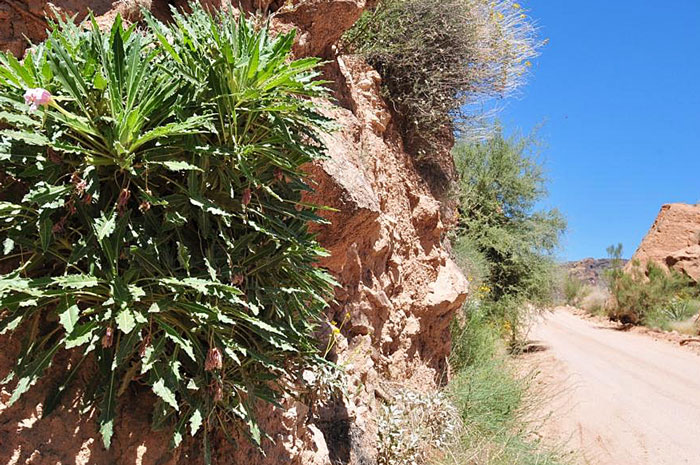
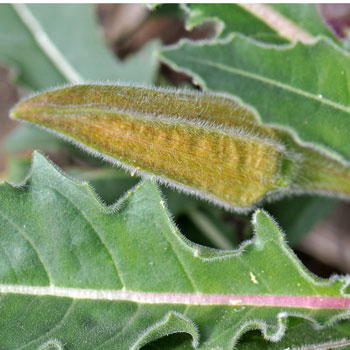
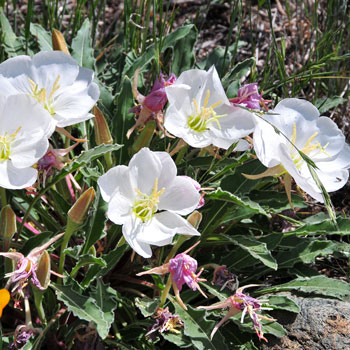
Scientific Name: Oenothera caespitosa
Common Name: Tufted Evening Primrose
Also Called: Fragrant Evening Primrose, Gumbo Evening Primrose, Gumbo Lily, Tufted Evening-primrose
Family: Onagraceae, Evening Primrose Family
Synonyms: (Oenothera caespitosa, Oenothera cespitosa subsp. eximia, Oenothera cespitosa subsp. macroglottis, Oenothera cespitosa var. eximia, Oenothera cespitosa var. longiflora, Oenothera cespitosa var. macroglottis, Pachylophus caespitosa)
Status: Native
Duration: Perennial;
Size: Up to 8 inches or more, 2 or 3 feet wide.
Growth Form: Forb/herb, subshrub; growth form is a rosette, stems from a woody caudex up to 7 or more inches long, additional shoots from lateral roots, glandular or non-glandular hairs.
Leaves: Green; oblanceolate to narrowly elliptic, tips pointed, variable from dentate or lobed.
Flower Color: White; showy large flowers from leaf axils, 4 heart-shaped petals up to 2 inches, yellow stamens, flowers open late in day, remain open during the night and begin to close and wilt the next morning, after wilting flowers fade to pink.
Flowering Season: April to August.
Elevation: Below 7,500 feet, up to 10,000 feet in California.
Habitat Preferences: Dry stoney slopes and dry, clay soils; in California in open desert scrub, pinyon-juniper woodland and coniferous pine forests.
Recorded Range: Tufted Evening Primrose is found in the western ½ of the United States (AZ, CA, CO, ID, MT, ND, NE, NM, NV, OR, SD, TX, UT, WA, WY) and throughout central Canada in Alberta and Saskatchewan and Manitoba. In Arizona, Tufted Evening Primrose is found throughout the state.
North America & US County Distribution Map for Oenothera caespitosa.
U.S. Weed Information: No information available.
Invasive/Noxious Weed Information: No information available.
Wetland Indicator: No information available.
Threatened/Endangered Information: No information available.
Genus Information: Over 80 species in Oenothera throughout all of North America. 24 or so species in Arizona and California, 28 or so species in New Mexico and 47 or so species in Texas.
The Plant List includes 706 scientific plant names of species rank for the genus Oenothera. Of these 150 are accepted species names.
5 sub-species in Oenothera caespitosa:
Oenothera caespitosa subsp. caespitosa, Tufted Evening Primrose (Recorded Range above excluding AZ, CA, TX);
Oenothera caespitosa subsp. crinita Tufted Evening Primrose (AZ, CA, NV, UT);
Oenothera caespitosa subsp. macroglottis Tufted Evening Primrose (NM, CO, UT, WY);
Oenothera caespitosa subsp. marginata Tufted Evening Primrose (Within the W ½ U.S.);
Oenothera caespitosa subsp. navajoensis Navajo Evening Primrose (AZ, CO, NM, UT).
Comments: This species of Evening Primrose attracts large night-flying insects such as Hawk Moths or Sphinx Moths (Sphingidae). Tufted Evening Primrose is similar in appearance to Dune Evening Primrose, Oenothera deltoides; which is an annual that grows in lover elevations and primarily in sandy soils.
Also see in Southwest Desert Flora: California Suncup, Oenothera californica; Crownleaf Evening Primrose, Oenothera coronopifolia; Velvetweed, Oenothera curtiflora; Large Yellow Desert Primrose, Oenothera primiveris; Rose Evening Primrose, Oenothera rosea; Mexican Evening Primrose, Oenothera speciosa and Scarlet Beeblossom, Oenothera suffrutescens.
Tufted Evening Primrose has been used as a dermatological aid (Blackfoot drug), a gynecological aid (Navajo, Kayenta drug) and as eye medicine (Hopi drug). See ethno-botanical uses at Native American Ethnobotany, University of Michigan, Dearborn.

